Plant Profiles: Guppy Grass Care Guide (2024 Guide)

So, you've got an aquarium. It's filled with water, and you've got some fish buddies swimming about in it. It's nice, but it's missing that certain je ne sais quoi. It feels like a party with all the guests, but no music.
Enter Guppy Grass - the life of the aquatic party! It's as easy to grow as making instant noodles - snip, plant, and watch it grow.
No PhD in Botany required.
As a rough rule of thumb, stem plants are usually the hardest kinds to grow. They need the strongest lighting, the most fertilizer, and proper trimming to keep them from being damaged during a prune.
But Guppy Grass breaks that trend by being an adaptable, extremely hardy plant that the majority of folks can grow with minimal effort! It's also useful for fry-rearing tanks and other conditions where you might want without having to invest lots of time in caring for them!

Guppy Grass Care Guide
- Scientific Name: Najas guadalupensis
- Origin: North & South America
- Care Level: Beginner
- Growth Rate: Moderate to Fast
- Nutritional Needs: Low
- Light Level: Low to Moderate
- Carbon Dioxide: Not required
- Height: 1 to 2 feet
Overview of Guppy Grass
It's time to talk about Guppy Grass, also known as "Najas Guadalupensis" if you want to get all sciencey about it. It's native to the Americas and is found from Quebec all the way down to Argentina.
Considering the differences in climate zones across its range, you'd expect this plant to be very adaptable, and you'd be right! It has been a part of the aquarium hobby for decades because it's so easy to grow and provides a ready place for Guppy fry to hide.
Unfortunately, Guppy Grass is sometimes too adaptable and is considered an invasive species in Japan, Israel, and other parts of the world where it has no native predators and crowds out any competition.
NOTE: this habit of growing explosively in the right conditions makes it a favorite of aquarists looking to completely fill portions of the tank in greenery!
Guppy Grass Appearance
It's got this vibrant green hue, and its leaves are fine, delicate, and beautifully branched out. It's like the hair metal band of aquatic plants - wild and free-flowing!
How Fast Does Guppy Grass Grow?
Let's just say, if Guppy Grass was in a race with a snail, the snail would still be saying "On your marks" while the guppy grass is already posing for its victory selfie at the finish line.
With the right conditions, this green lightning can grow 2 inches a week!
Height: 1 to 2 feet
How Can I Encourage Faster Growth in Guppy Grass?
Okay, so you might be thinking, "Does Guppy Grass have a list of demands a mile long like some sort of aquatic diva?" No need to worry. It's as low maintenance as a pet rock. It likes moderate lighting, tolerates a wide range of water conditions, and if you say the word 'fertilizer' around it, it just giggles and blushes a bit.
1. Lighting

Guppy Grass is versatile with its lighting needs. It thrives in high-light intensity but also manages well in low-light aquariums. That said, medium to high lighting conditions promote faster growth.
Aquatic plants, including Guppy Grass, require photosynthetically active radiation (PAR). When choosing lighting, aim for a color temperature conducive to PAR, ideally between 6400-6800K.
Standard aquarium lights often exceed the optimal color temperature range for plants. However, modern aquarium kits, such as NICREW's Freshwater LED Aquarium Light, fall within the ideal PAR range.
REMEMBER: Proper lighting is key to the healthy growth of Guppy Grass. Use aquarium lights designed for plant growth to get the best results.
2. Fertilizer and Carbon Dioxide
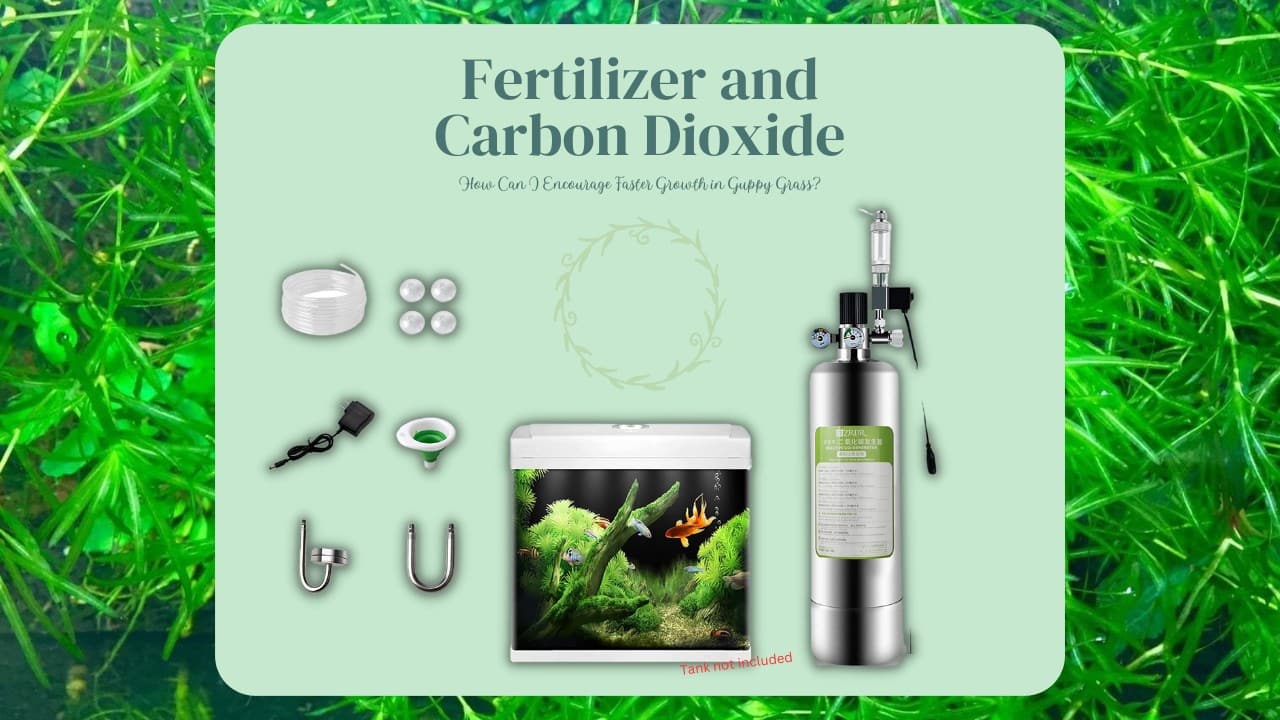
Guppy Grass adjusts its growth rate based on the nutrients available in its surroundings. Under optimal conditions, it can exhibit incredibly fast growth, with lighting typically being the key limiting factor. Since most aquariums also house fish, the water will already have traces of essential plant nutrients such as phosphates and ammonia, courtesy of fish waste and leftover food.
However, if you aim to witness lush growth, providing supplemental fertilization or root tablets when growing Guppy Grass can be beneficial. If your goal is a low-maintenance plant, you can opt to skip supplementation.
Carbon dioxide (CO2) ranks second in importance after lighting for almost all aquarium plants. All plants require CO2 for survival, as it is necessary for the construction of their cell walls, stems, and other solid parts.
Guppy Grass reacts positively to CO2 supplementation. Coupled with bright lighting, this can lead to rapid growth, possibly requiring weekly pruning! Sadly, aquarium fish are not a reliable CO2 source, and the atmospheric CO2 doesn't dissolve efficiently into the water.
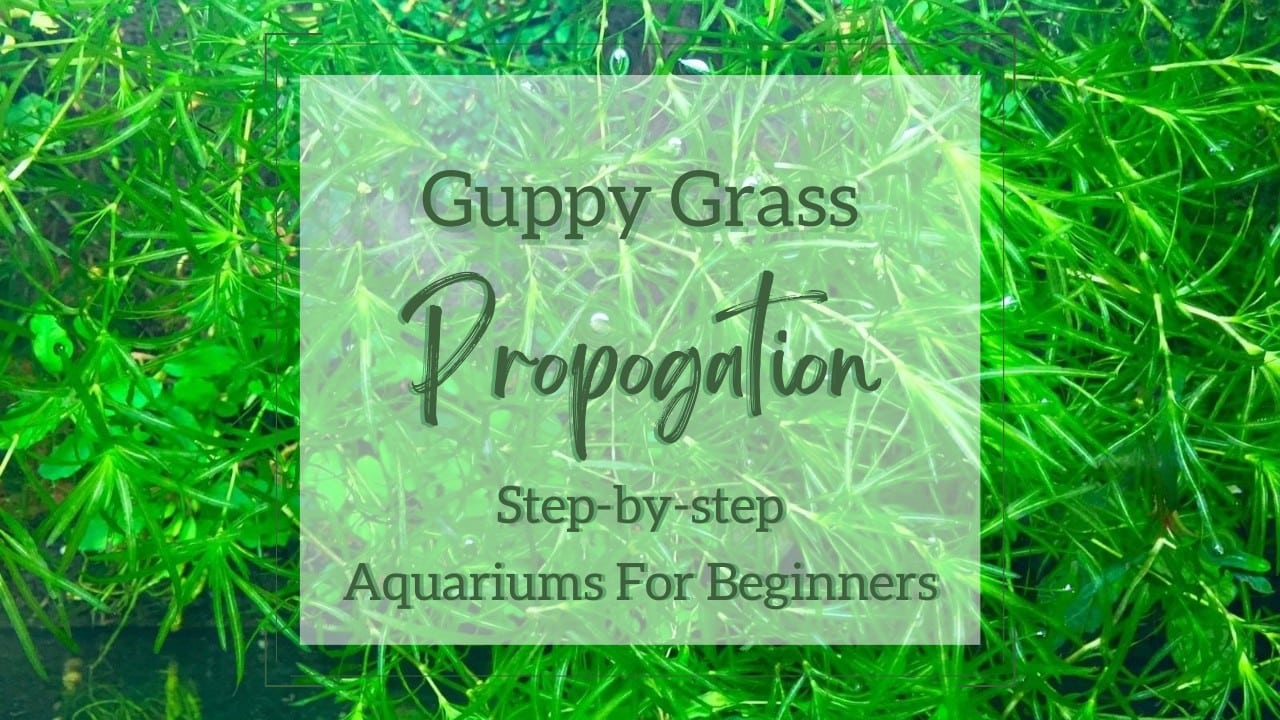
Guppy Grass Propagation
Guppy Grass is tremendously easy to propagate:
1️⃣ Find Your Guppy Grass! Start by locating a healthy, lush patch of guppy grass in your aquarium.
2️⃣ Get Your Sharp Propagating Scissors! ✂️ Grab your special propagating scissors. They're extra sharp and perfect for this job.
3️⃣ Trim the Stem! ✂️ Carefully trim the stem back. Try to avoid crushing the cells. Remember, a clean cut equals a healthy cut!
4️⃣ Free Floating or Rooted? Your Choice! You can let the cut portions float freely in the aquarium or tie them into bunches to be rooted back into the substrate.
5️⃣ Let Nature Take Its Course! Give it some time and you'll soon see your guppy grass spreading across the tank.
⚠️ Warning! ⚠️ Avoid using regular scissors or ripping the plant by hand. Crushing the plant stem can lead to rot, which might kill your cutting. Always use sharp, planting scissors for the healthiest propagation.
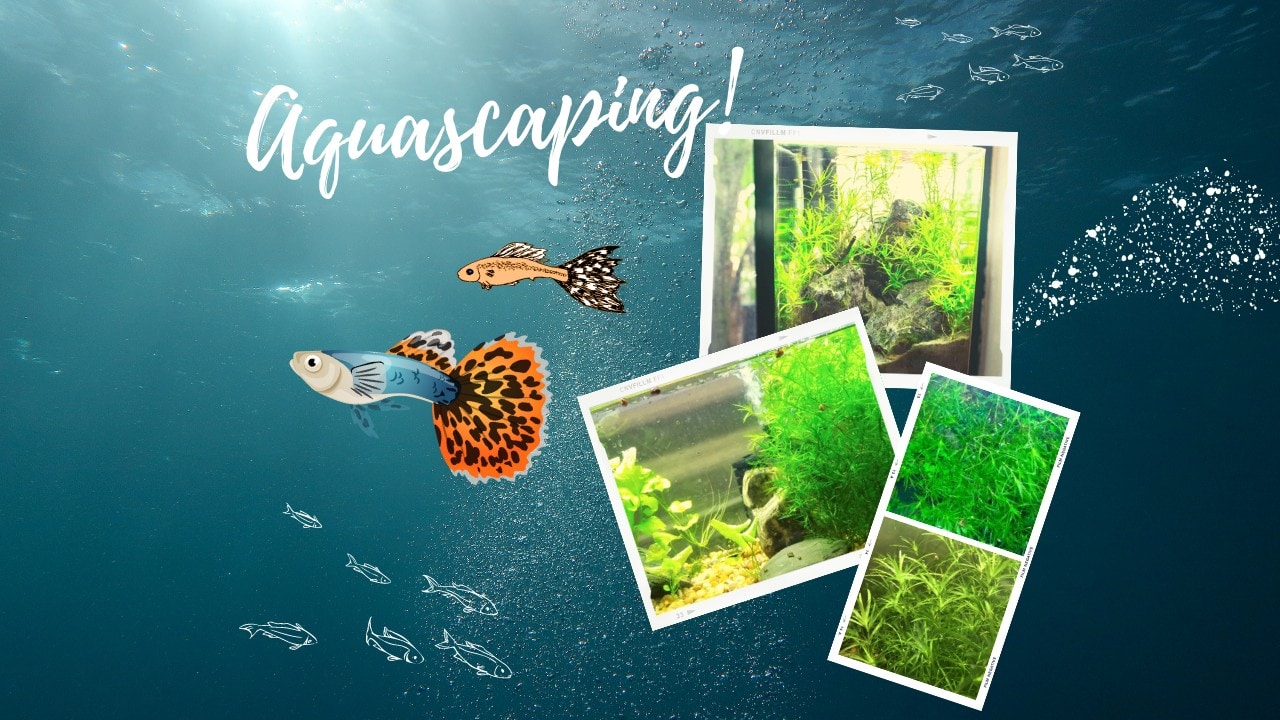
Aquascaping with Guppy Grass
Guppy Grass is one of the most flexible aquarium plants around when it comes to aquascaping! This is because it can be grown as a carpeting plant, a tall stem plant for the midground and background, or even as a floating plant! Essentially, you can simply toss it into an aquarium as long as there is light and nutrients available for it, Guppy Grass should do very well!
Growing it as a carpeting plant is the hardest strategy since Guppy Grass prefers to grow taller towards the light. Intense lighting (150+ PAR) and regular trimming can cause it to grow laterally along the substrate, however, where it forms a lawn-like carpet.
And as a rooted stem plant, Guppy Grass forms thick bushes of growth that can be used as a midground filler or a background plant in smaller tanks. For larger setups I would use taller plants like Eelgrass (Vallisneria sp.) for the background over Guppy Grass.
Lastly, you can allow Guppy Grass to simply float about the aquarium. It can obtain nutrients directly from the water column as well as its roots. And the close proximity to the aquarium lights will result in denser growth, so long as you don't mind the rather untidy appearance the plant takes as it wafts around the aquarium.
The main benefits that Guppy Grass has to offer to your aquascape are its ease of growth and the safety that it offers young fish and shrimp. If you have a tank full of breeding livebearers or egg scatterers like Tiger Barbs, Goldfish, or Danios, then Guppy Grass can keep these fish from rediscovering – and eating – their eggs and fry.
Unfortunately, the majority of fish are very poor parents. After spawning they will quickly forget about the eggs they've laid and treat them like any other source of food. In the wild, the space offered by a lake or river helps fry avoid discovery but in the confines of an aquarium, running into a larger adult is inevitable.
Some suitable plants to pair with Guppy Grass in your aquarium include:
- Java Moss
- Anubias Barteri
- Cryptocoryne Wendtii
- Amazon Sword
- Dwarf Sagittaria
The dense foliage of Guppy Grass provides not only shelter for young animals but also a source of food! Plants encourage the growth of microorganisms which coat their leaves in a thin microbial slime that fish fry and baby shrimp feed from!
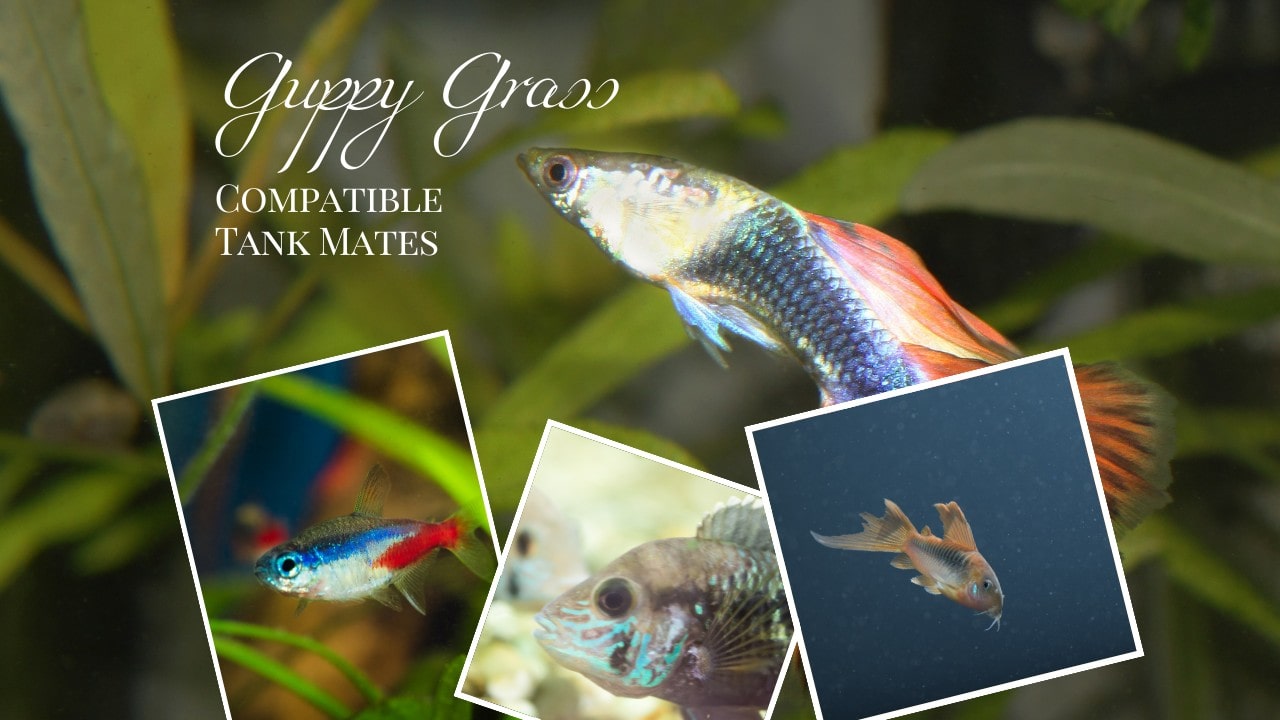
Compatible Tank Mates for Guppy Grass
Here's the good news, Guppy Grass is like that one friend we all have who gets along with everyone. It's compatible with most fish, invertebrates, and other aquatic plants.
Here's a list of top compatible tank mates for Guppy Grass:
- Guppies
- Tetras
- Shrimps
- Corydoras Catfish
- Dwarf Cichlids
- Snails
WARNING: Large, herbivorous species like Goldfish and certain types of Plecos might nibble on Guppy Grass, which can stunt its growth or cause damage. Also, Extremely aggressive species such as Cichlids (especially the larger ones) may uproot or damage the plant during their territorial disputes.
Frequently Asked Questions for Guppy Grass Care
Is Guppy Grass Suitable for Beginner Aquarists?
Oh, absolutely! Guppy Grass, also known by the cool kids as grass najas, is the perfect starter pack for any aspiring aquarist.
This fast-growing plant is as easy to care for as remembering to brush your tiny unicellular teeth in the morning, and it creates a natural habitat for your aquatic pets.
How to Plant Guppy Grass?
You can let it float around, looking cool and free-spirited. Or, if you prefer the grounded approach, you can anchor it with a bit of fishing line or a small stone.
Can Guppy Grass Be Kept in a Low-Tech Planted Tank?
Are you kidding? In a low-tech planted tank, this aquarium plant doesn't require excess nutrients or fancy liquid fertilizers Guppy Grass. Just a bit of water flow, some TLC, and it'll flourish like the rosy barbs at a summer fair.
How Many Guppy Grass Plants Should Be Planted per Gallon?
Ah, the tank size guppy grass question.
One stem per gallon should do. it’s less about hard numbers and more about setting a balance.
REMEMBER: Tiny fish like celestial pearl danios and newly hatched fry need more cover. So for them, you'd want to add a bit more grass.
Can Guppy Grass Be Planted in Gravel?
Can you make a pancake flip without a spatula? It's possible, but not ideal. Guppy Grass, can technically be planted in gravel, but it loves to play hard to get.
It doesn't always grow roots deep, and might just decide to float off and be all independent, waving its white roots at you from the water surface.
How Often Should I Fertilize Guppy Grass?
Using liquid fertilizer once a week usually does the trick. Add in a bit of liquid carbon, and you'll see this green wonder popping up faster than ads on a streaming site.
How to Deal with Guppy Grass Melting?
Ah, the dreaded melting. Not as cool as it sounds, right? If your guppy grass starts pulling a wicked witch and melting away, you've got a few factors to consider:
- Check your water conditioner: Ensure it's suitable for your aquatic setup.
- Monitor temperatures: Keep them within the ideal range for Guppy Grass.
- Allow ample light: Avoid blocking light sources, as Guppy Grass thrives in well-lit conditions. Don't be a light hog!
Where to Buy Guppy Grass?
Last, but certainly not least, where can you snag some of this marvelous najas grass? Well, most local fish stores carry it, tucked right next to other plants. If you don't see it, don't panic.
You can also find it online. Just be sure to quarantine guppy grass before adding it to your tank to avoid any unwelcome microscopic food source or heavy metals.
WARNING: Guppy Grass is the life of the party, growing fast and covering a lot. Don't let it block light from other plants. It's also a fantastic food source for fish, but be sure your fish don't eat guppy grass faster than it grows! Finally, be mindful not to let any escape into local waterways. This plant is so good at growing, it could become invasive.
Additionally, for expert tips and shared experiences, consider joining our Facebook community group. We have a rapidly growing family of over 450k+ members who share a common passion for aquarium life!

Conclusion
In sum, The benefits of Guppy Grass extend beyond its appealing green color and ability to add beauty to your tank. Its robust growth can help combat algae growth by outcompeting it for nutrients and its dense foliage provides an excellent spawning mop for fish and a sanctuary for dwarf shrimp.
Finding guppy grass for sale is as easy as visiting your local fish store, where you might also get expert advice on how many fish would be suitable for a guppy grass-filled aquarium, given its oxygen-producing abilities.
And with that, you're ready to dive in! Grow guppy grass and become the master of your aquatic kingdom!
No comments

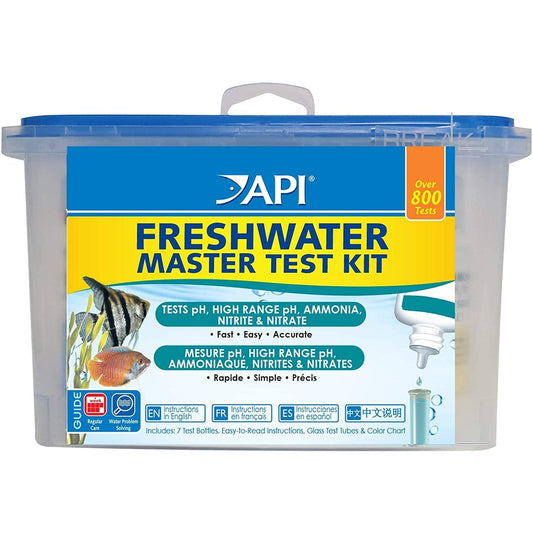
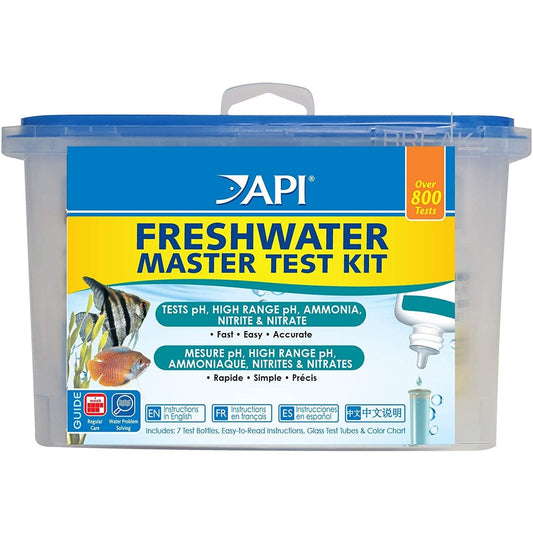
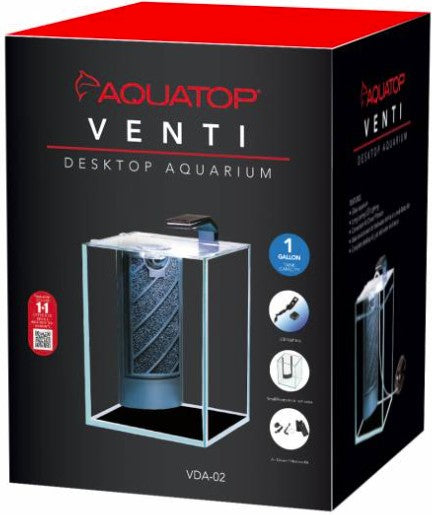



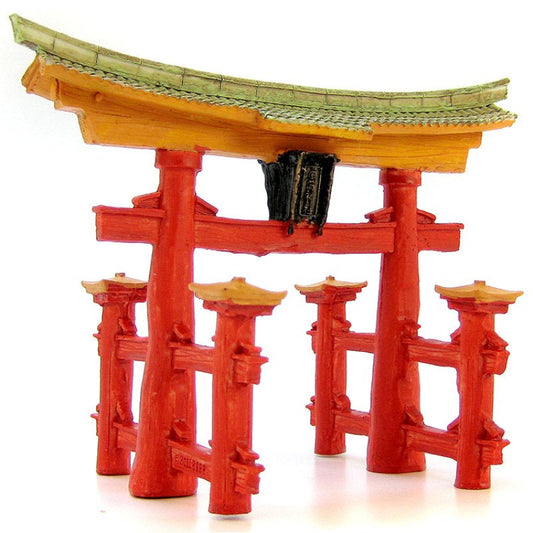


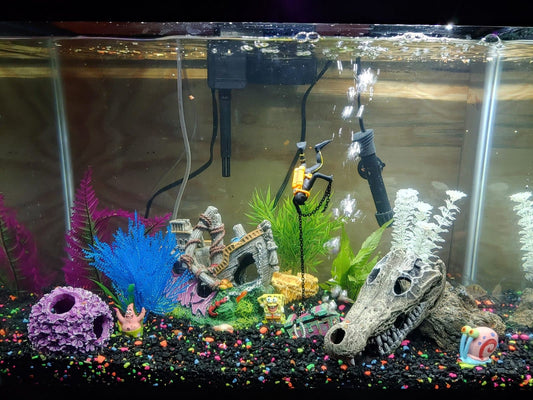



0 comments